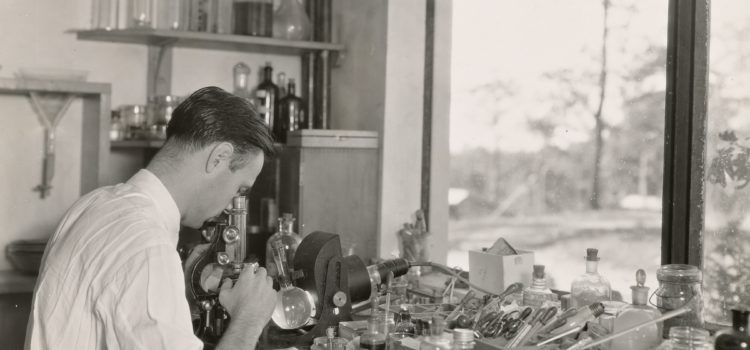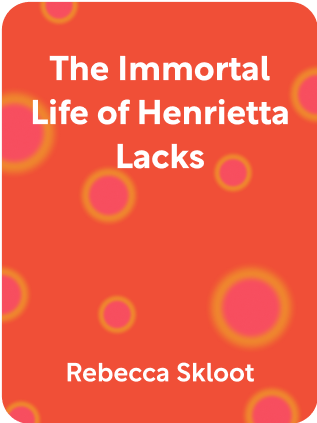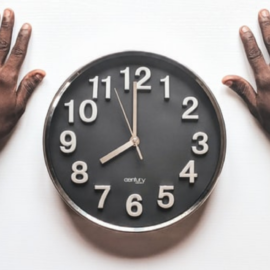

This article is an excerpt from the Shortform summary of "The Immortal Life of Henrietta Lacks" by Rebecca Skloot. Shortform has the world's best summaries of books you should be reading.
Like this article? Sign up for a free trial here .
Can you get a biological patent on someone else’s cells? What happened to John Moore’s cells when Dr. David Golde took them? How did the court consider the issue of patenting of biological material?
John Moore’s cells were involved in an important case on the patenting of biological material. Read more about his case, which involved the issue of awarding a biological patent and breach of fiduciary duty.
John Moore’s Cells
John Moore was a hard-working surveyor working on the Alaska Pipeline when he discovered he had a rare cancer called hairy-cell Leukemia. This type of cancer caused his spleen to fill with cancerous blood cells.
He was referred by his local doctor to Dr. David Golde, a cancer researcher at UCLA, who told Moore that the only option was to remove the spleen. Moore consented, signing a form that allowed the hospital to dispose of any tissue by cremation.
Ongoing Samples of John Moore’s Cells
Moore survived and started a new career in Seattle. Every few months, however, between 1976 and 1983, Golde had him fly down to Los Angeles for follow-ups. During these follow-ups, Golde would take samples of everything from bone marrow to semen. At a certain point, Moore got tired of all the travel and asked Golde if he could see a doctor closer to home. Dr. David Golde offered to fly Moore down and pay for stays at a fancy hotel, an offer Moore thought was strange but accepted.
Dr. David Golde Seeks Rights to John Moore’s Cells
In 1983, however, when a nurse asked Moore to sign a form relinquishing his rights to any products the University of California developed from his cells, he became suspicious. The first time he was offered the form, he circled “do” and agreed to hand over his rights. When he was offered an identical form on a subsequent visit, he asked Golde if his treatment had commercial value. Golde denied it, but Moore circled “don’t” and retained his rights out of caution.
Almost immediately thereafter, Moore began receiving pressure from Golde to sign over his rights. Moore continued to refuse and notified a lawyer. That was when he discovered that Golde had recently filed a biological patent on a cell line called “Mo” developed from Moore’s cells, and that Golde was to receive over $3 million from a biotech company to make Mo into a commercial product. Mo’s market value at the time was estimated at $3 billion with a biological patent.
Human Tissues and the Law of Biological Patents
The patenting of biological material had only recently been established in law. In 1980, a General Electric scientist had engineered a strain of bacteria that consumed oil and had been denied a biological patent because his “invention” was a living organism. The Supreme Court decided in the scientist’s favor, on account of the fact that oil-consuming bacteria weren’t naturally occurring and their existence was solely due to the scientist’s “ingenuity.”
And Dr. David Golde had good reason to want a biological patent for John Moore’s cells. Although most cell lines contribute little to the study of disease and the development of medicines, Moore’s cells made rare proteins that could be used in cancer therapies. They also carried HLTV, a virus related to HIV, that could contribute to the development of an AIDS vaccine.
Once Moore learned what Golde had done, he sued Golde and UCLA for (1) using his tissue for research without his consent and (2) stealing his tissues for a biological patent. There was also a question of informed consent and breach of fiduciary duty. He was the first person in history to assert a claim over his own tissues and sue for damages.
The judge ended up throwing out Moore’s case on biological patents. Part of his justification involved HeLa: He reasoned that if no one had sued to regain rights to the most famous cell line of all—HeLa—it showed that patients were OK with their cells being used commercially. Moore was an outlier.
After seesawing decisions on appeal, the biological patents case was finally decided in Golde’s and UCLA’s favor in 1990, when the California Supreme Court ruled that any tissues separated from one’s body, whether they’re removed with consent or not, cease to be considered the person’s property. They’re considered waste, and whatever someone does with them can be considered the product of “inventive effort” that supports a biological patent. To rule in Moore’s favor, the Court determined, would hinder scientific advance by eliminating the profit motive of biological patents from research.
Minor Win on Breach of Fiduciary Duty
It wasn’t a total defeat for Moore, however. The Court did side with him on the question of informed consent: It found that Golde had failed to inform Moore of Golde’s financial interest and there was a breach of fiduciary duty as a doctor. The upshot was the Court’s recommendation (rather than mandate) that researchers disclose any financial interest in patients’ tissues. But researchers weren’t required to share any financial proceeds with patients (Moore, a case in point, was awarded no profits).
The media attention surrounding Moore’s lawsuit notwithstanding, the Lackses were completely unaware of the legal drama concerning scientists’ obligations when it came to human tissue and the patenting of biological material.

———End of Preview———
Like what you just read? Read the rest of the world's best summary of Rebecca Skloot's "The Immortal Life of Henrietta Lacks" at Shortform .
Here's what you'll find in our full The Immortal Life of Henrietta Lacks summary :
- How Henrietta's cells became used in thousands of labs worldwide
- The complications of Henrietta's lack of consent
- How the Lacks family is coping with the impact of Henrietta's legacy






